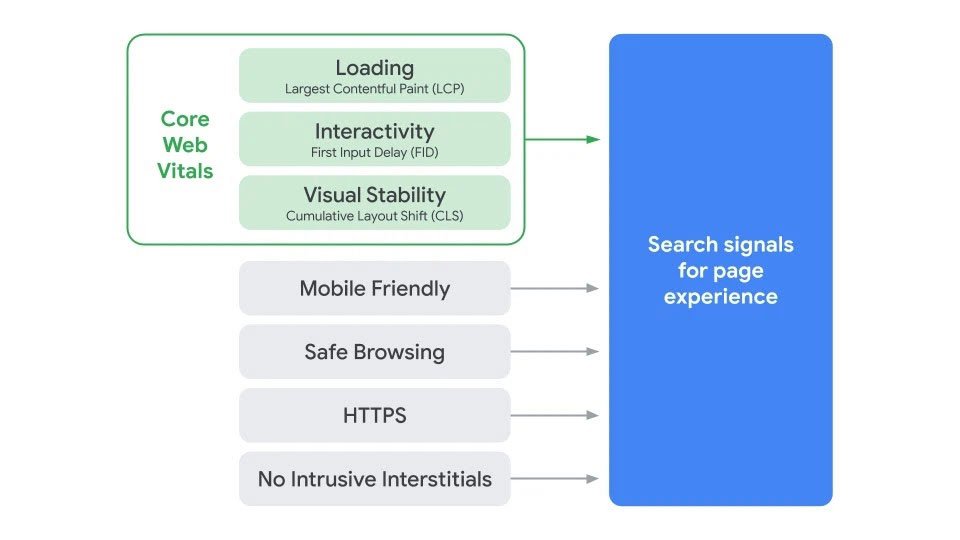Why your Business needs to make User Experience (UX) a 2021 Priority
In 2021, User Experience will be an important Google ranking factor. Find out how this is going to work and what you can do to get ready for this.
A bit of context first
Google recently announced it is to release a new ranking algorithm that will quantify a user’s perceived experience (UX) when determining the ranking for a particular page or website, from 2021.
This announcement also comes after Google showed a Core Web Vitals report in Google Search Console (GSC), where it includes some metrics considered vital for UX.
Google understands that the majority of sites don’t belong to big brands or businesses, but they also know that doesn’t mean their customers love them any less. Google is preparing us with this new ranking algorithm, so how can your business prepare for this?
“Good” UX has always been believed to lead to better rankings, but Google is rebranding their priorities as part of their algorithm magic and which tools help to make that impact.
What is “Page Experience”?
“Page experience is a set of signals that measure how users perceve the experience of interacting with a web page beyong its pure information value” (Google).
A broad search algorithm update revolving around measuring a user’s experience on a page, called the Google Page Experience Ranking Update, releasing as early as 2021: meaning, increased engagement and smoother conversions.

What does it really mean?
Google Makes UX a Search Ranking Factor in 2021 – So what do you need to know?
Strong foundations, functional and usable platforms or products lead to higher conversion rates. That’s a straightforward explanation. But User Experience is that and more.
What about pleasurable experiences? Memorable experiences and reviewed habits created?
We could add here that ethics and easing user’s anticipation are two other factors to this new 2020 paradigm.
Especially important in the COVID-era, many companies were forced to change the way they operate to be either more, fully or for the first time online, to keep their previous or new digital customers satisfied and engaged.
According to the Google algorithm, what constitutes a good user experience on a site (from its developer document) are the basics being catered for, such as: is it mobile-friendly, does it load fast, does the content jump around, are there distractions or interruption points?

So, where to start?
User Experience is the vessel in driving holistic hyper-growth
When you group these factors together, you get this page experience for all these elements. Rather than a ‘ranking score’, each element within has its own weights and rankings in the overall Google ranking algorithm. Google promised to give six-months notice before it goes live, but here are some concerns and tips from our UX Design team:
- Core Web Vitals Report: it’s time to review the loading time, interactivity and visual stability from your report.
- Review existing search signals: Content, Mobile-friendliness, Safe Browsing, HTTP, Intrusive Interstitials (pop-overs).
- Are users frustrated waiting for your website to load? 75% of the page load should be ‘Good’ (Largest Contentful Paint).
- Mobile optimisation (mobile-first indexing), lazy load images and compression without compromising quality are some factors you should consider.
- Are users waiting for button clicks to give feedback? Measure these responses and actions.
- How are you measuring your user’s interactions? Finding usability issues through heat maps, user testing, analytics and other research methods.
- Great content with a poor page experience can still rank highly in Google search, but at what cost?
- Expertise Authority and Trust: this means Google expect the businesses to focus on the users, their challenges, keywords researched for user’s search intent. Credible content from the business is crucial and this can be done by evoking either emotion or storytelling where needed; clear ways to contact; easily access policies; and others.
- There is a fundamental shift in the role of SEO within some organisations and the spotlight is on the SEO strategy as it relates to UX.
Next Steps
Looking at your content diagnostics, different tools to measure usability and review relevant reports that summarise how your site is performing and engaging.
Review layouts, interactions and visual stability as these are just as important as the content itself.
If you feel this is the time to review your platform or have any questions, get in touch with our UI / UX Design team. You can do so by +353 (0)1 4750066 or email us at [email protected]




